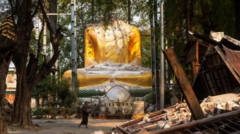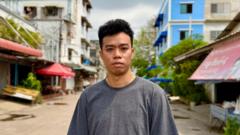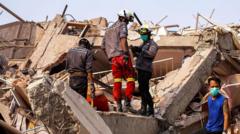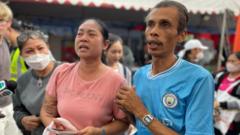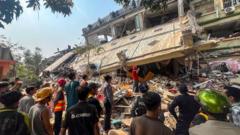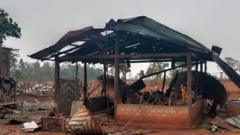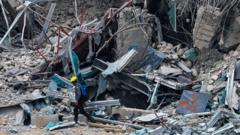In the early hours of Thursday, residents of Naples faced a restless night on the streets and in their vehicles as a significant earthquake rocked the region, shaking buildings and causing minor destruction. Italian seismologists reported that the quake registered a magnitude of 4.4 and occurred at 01:25 local time (00:25 GMT) at a shallow depth of 3 km (approximately two miles), with its epicenter located along the coast between Pozzuoli and Bagnoli.
Residents of Naples Spend Night Outdoors Following Significant Earthquake
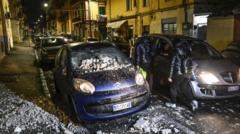
Residents of Naples Spend Night Outdoors Following Significant Earthquake
A 4.4 magnitude quake struck Naples, prompting residents to seek shelter outdoors as buildings trembled and fears of aftershocks grew.
The tremor sent shockwaves throughout Naples and disrupted power supplies in various parts of the city. The National Institute of Geophysics and Volcanology (INGV) reassured the public that there was "no evidence" of an impending eruption from the nearby Campi Flegrei volcanic crater. However, in Bagnoli, near the quake's epicenter, emergency responders pulled a woman from the rubble of a partially collapsed structure, reportedly with only light injuries.
The quake's tremors were felt throughout the Campania region, marking it as the largest seismic event in the Campi Flegrei (Phlegraean Fields) in 40 years, comparable to a significant quake that occurred in May 2024. Following the initial shock, multiple aftershocks were reported, which caused further anxiety among the residents. In response to the situation, many residents left their homes and gathered in the streets of Naples, fearing additional tremors. Damage included a church bell tower and smashed car windows in various neighborhoods.
Local authorities expressed concern that recent tremors could signal a new geological phenomenon, as highlighted by a resident from Pozzuoli during an interview with Italian television. Meanwhile, Bacoli's Mayor Josi Gerardo Della Ragione described the night as challenging but noted that his town had not experienced major damage.
Authority figures, including Prime Minister Giorgia Meloni, maintained constant monitoring and communication surrounding the situation. Schools in other parts of the region were closed for inspections to ensure building stability following the earthquake.
The Campi Flegrei area is not only vulnerable to earthquakes but is also a volcanic basin that has a history of geological instability. Local officials are particularly worried about rapid rates of "bradyseism," which entails ground movement affecting surface height. Francesca Bianco from INGV warned that the rate of ground uplift has increased recently, prompting concerns among civil protection authorities. Edoardo Cosenza, a civil protection councillor in Naples, emphasized on social media the importance of responding to these indicators, stating, “We know it and we need to know it."
The quake's tremors were felt throughout the Campania region, marking it as the largest seismic event in the Campi Flegrei (Phlegraean Fields) in 40 years, comparable to a significant quake that occurred in May 2024. Following the initial shock, multiple aftershocks were reported, which caused further anxiety among the residents. In response to the situation, many residents left their homes and gathered in the streets of Naples, fearing additional tremors. Damage included a church bell tower and smashed car windows in various neighborhoods.
Local authorities expressed concern that recent tremors could signal a new geological phenomenon, as highlighted by a resident from Pozzuoli during an interview with Italian television. Meanwhile, Bacoli's Mayor Josi Gerardo Della Ragione described the night as challenging but noted that his town had not experienced major damage.
Authority figures, including Prime Minister Giorgia Meloni, maintained constant monitoring and communication surrounding the situation. Schools in other parts of the region were closed for inspections to ensure building stability following the earthquake.
The Campi Flegrei area is not only vulnerable to earthquakes but is also a volcanic basin that has a history of geological instability. Local officials are particularly worried about rapid rates of "bradyseism," which entails ground movement affecting surface height. Francesca Bianco from INGV warned that the rate of ground uplift has increased recently, prompting concerns among civil protection authorities. Edoardo Cosenza, a civil protection councillor in Naples, emphasized on social media the importance of responding to these indicators, stating, “We know it and we need to know it."


